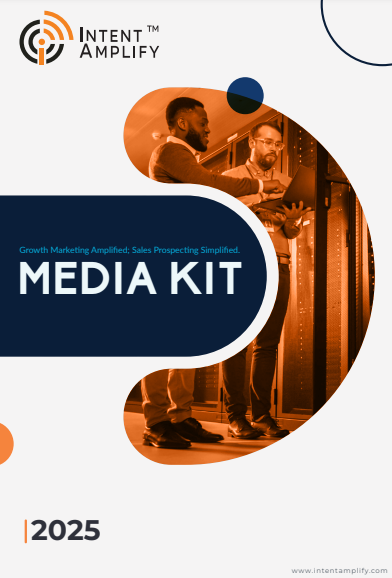
Mastering Demand Generation Programs: A Comprehensive Guide
- Last updated on: November 10, 2023
A well-crafted demand generation program is the linchpin of success when it comes to B2B marketing. It’s the engine that drives brand awareness, nurtures leads, and ultimately fuels revenue growth. But what exactly is demand generation, and how does it differ from lead generation? In this in-depth exploration, we will dissect the five pivotal steps required to construct an effective B2B demand generation program.
1. Build Awareness: The Foundation of Success
Building brand awareness isn’t just about grabbing the attention of potential buyers. It’s about leaving a lasting, positive impression that fosters trust and credibility. Here’s how to achieve this:
Authentic customer reviews: Genuine customer reviews are a sureshot way to build awareness. Human insights are more valued and trusted by fellow humans when making informed decisions.
Why to Build Brand Awareness?
- Establish Credibility: Building awareness positions your brand as an industry authority, instilling trust among B2B prospects.
- Lead Nurturing: It paves the way for effective lead nurturing, enabling you to engage and educate potential clients.
- Market Differentiation: Awareness highlights what sets your offerings apart from competitors, making your B2B solutions more compelling.
- Referral Opportunities: Increased awareness can lead to referrals, expanding your lead pool through trusted connections.
- Effective Targeting: It ensures you attract the right audience, increasing the likelihood of converting leads into customers.
2. Develop a Content Strategy: Establishing Industry Expertise
Establishing industry expertise is the cornerstone of an effective demand-generation program. When your brand is perceived as an authority from the first interaction, it builds client trust and lays the groundwork for meaningful conversations. Here’s how to achieve this.
Tailored Content: A robust content marketing strategy is the best way to build expertise. Providing valuable, timely insights at each stage of the buyer’s journey instills trust and credibility. Your content should address the unique needs and concerns of high-value leads.
Why to Develop a Content Strategy?
- Targeted Messaging: Content strategy ensures your B2B content speaks directly to your audience, addressing their pain points and needs.
- Thought Leadership: Establishing expertise through strategic content builds trust and credibility with potential leads.
- Lead Nurturing: Content guides prospects through the sales funnel, keeping them engaged and informed.
- SEO Optimization: Well-planned content boosts search engine visibility, attracting more qualified leads.
- Data-Driven Insights: Tracking and analyzing content performance enables continuous refinement for better lead generation results.
3. Nurture High-Quality Leads: The Continuous Engagement
Demand generation programs are not a one-and-done process. It requires ongoing engagement throughout the buyer’s journey. Marketing teams need to work in tandem with sales, providing valuable content and staying attuned to buyer questions and attitudes. Here’s how to effectively nurture leads:
Targeted Lead Nurturing: Continuously interact with high-value leads, delivering content that addresses their specific needs and concerns. Ensure that your content is relevant to each stage of the buyer’s journey and anticipate common questions.
Performance Monitoring: Regularly monitor lead feedback and track performance data. Adjust your lead nurture campaigns and messaging to optimize results.
Why to Nurture High-Quality Leads?
1. Building Relationships: Lead nurturing fosters relationships with potential B2B clients over time, increasing trust and engagement.
2. Timely Engagement: It ensures prospects receive relevant information at the right time, addressing their specific needs and pain points.
3. Increased Conversion: Nurtured leads are more likely to convert into customers, as they have a deeper understanding of your solution.
4. Cost-Efficiency: It optimizes resources by focusing on the most promising leads, reducing the wastage of marketing efforts.
5. Long-term Loyalty: Effective lead nurturing can lead to long-term customer loyalty, making it a pivotal element in B2B lead generation strategies.
4. Incorporate Account-Based Marketing (ABM): Targeted Precision
Account-Based Marketing (ABM) is a strategy focused on select high-value accounts. It tailors marketing and sales support to these accounts, aligning with their unique pain points. Here’s how to make ABM work for you:
Account Selection: Choose accounts based on their potential for conversion or growth. Understand their shared business objectives, values, and buying journey.
Personalized Content: Create content that directly addresses the unique needs and questions of your target accounts. Your brand should be seen as a trusted guide within the marketplace.
Why to Incorporate Account-Based Marketing?
- Highly Targeted Approach: Account-Based Marketing (ABM) focuses on specific key accounts, ensuring your resources are efficiently allocated.
- Personalized Engagement: Tailoring content and messaging to individual accounts increases engagement and relevance.
- Better Conversion Rates: ABM nurtures high-quality leads, resulting in improved conversion rates.
- Sales and Marketing Alignment: ABM fosters collaboration between sales and marketing teams for more effective lead generation.
- ROI Maximization: ABM helps maximize Return on Investment by focusing on high-value accounts, ultimately driving revenue growth.
5. Invest in Partner Marketing: Amplifying Your Reach
The shift from in-person to virtual business interactions has underscored the importance of digital marketing. Partnering with third-party providers can be a game-changer in reaching a curated, prescreened audience. Here’s how to leverage partner marketing:
Finding the Right Partners: Identify partners who have already cultivated the online audience you seek. They can help your products or services reach the right buyers at the right time.
Why to Invest in Partner Marketing?
- Strategic Alliances: Partner marketing in B2B lead generation involves collaborating with complementary businesses, expanding your reach, and tapping into your customer base.
- Enhanced Credibility: Leveraging partners can enhance your brand’s credibility and trustworthiness, making prospects more likely to engage and convert.
- Cost-Effective Growth: Partner marketing often proves cost-effective, sharing expenses and efforts, leading to a higher return on investment in lead generation efforts.
Conclusion
Incorporating these steps into your demand generation program creates a holistic and effective approach to driving revenue. Each component complements the others, forming an interwoven strategy that leads to success.
As you embark on your journey to master demand generation, remember that success in a demand generation program is not a destination but an ongoing journey. Continuous improvement, adaptation, and the embrace of innovative technologies are essential to stay ahead in the competitive B2B landscape.
For an array of additional resources and the opportunity to connect with in-market buyers, explore Gartner Digital Markets. In the dynamic world of B2B sales and marketing, it’s the key to staying ahead and thriving in the ever-evolving marketplace.




